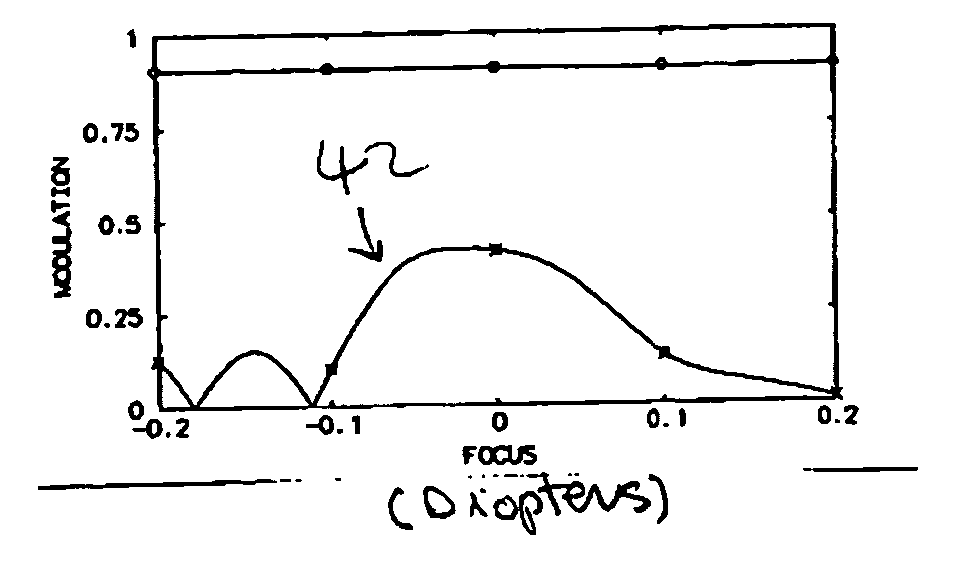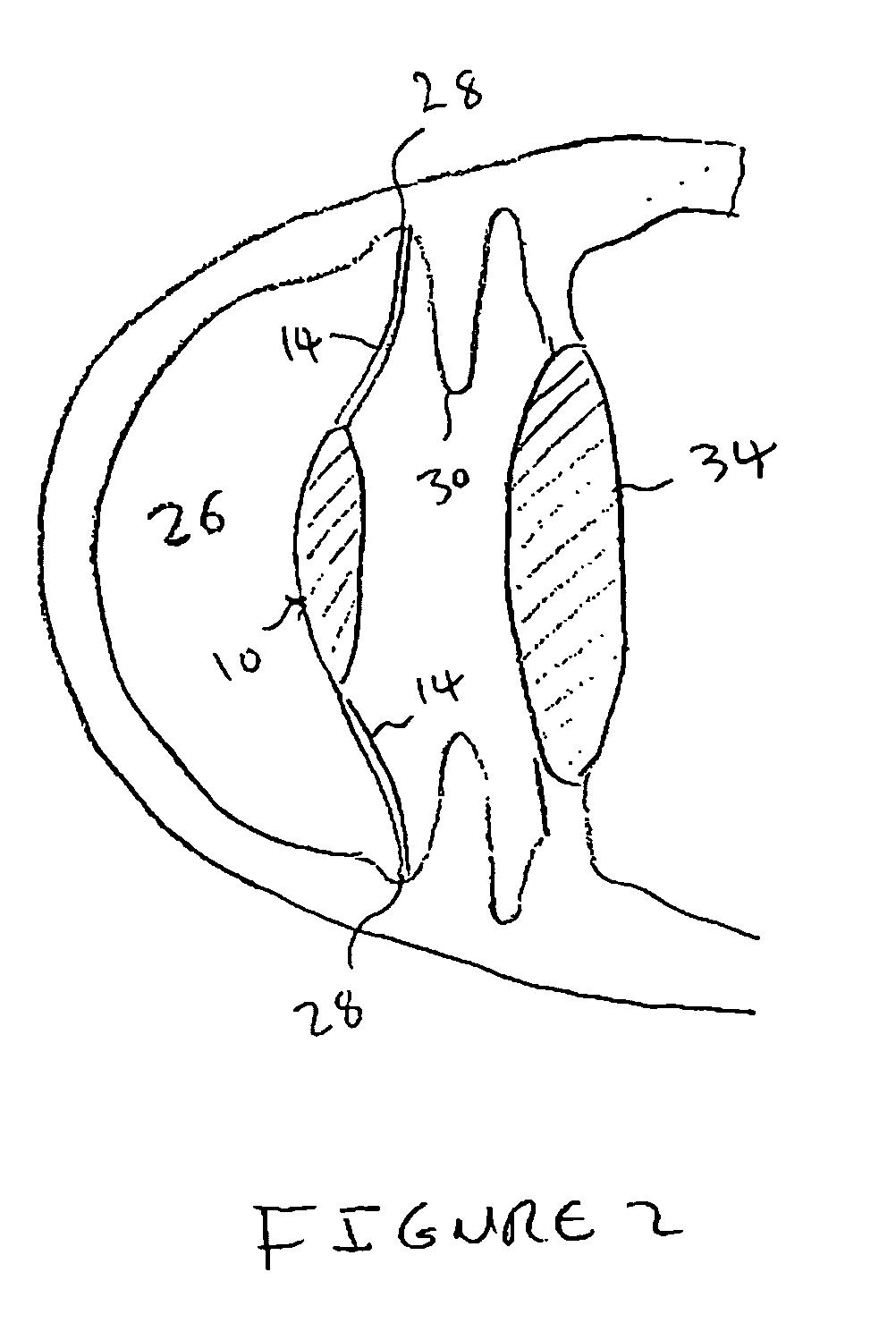Contrast-enhancing aspheric intraocular lens
a technology of aspheric aspheric lens and contrast enhancement, which is applied in the field of intraocular lens, can solve the problems of reducing the depth of field of the patient, affecting the image quality of the patient, etc., and achieves the effect of useful image contrast and improved vision
- Summary
- Abstract
- Description
- Claims
- Application Information
AI Technical Summary
Benefits of technology
Problems solved by technology
Method used
Image
Examples
Embodiment Construction
[0032]FIG. 1A schematically depicts a monofocal intraocular lens 10 according to one embodiment of the invention having an optic 12 preferably formed of a soft biocompatible material, such as soft acrylic polymer, silicone, or hydrogel. The exemplary lens 10 further includes radially extending fixation members or haptics 14 for its placement in a patient's eye. The fixation members 14 can be made of suitable polymeric materials, such as polypropylene, polymethyl methacrylate and the like as known to those having ordinary skill in the art. In some embodiments, the optic and the fixation members are formed from the same material as a single piece lens. The optic 12 includes an anterior refractive surface 16 and a posterior refractive surface 18 that are shaped so as to cooperatively provide the lens with a nominal optical power in a range of zero to about 40 Diopters and, more preferably, in a range of about 18 to about 26 Diopters. In this exemplary embodiment, the refractive surface...
PUM
 Login to View More
Login to View More Abstract
Description
Claims
Application Information
 Login to View More
Login to View More - R&D
- Intellectual Property
- Life Sciences
- Materials
- Tech Scout
- Unparalleled Data Quality
- Higher Quality Content
- 60% Fewer Hallucinations
Browse by: Latest US Patents, China's latest patents, Technical Efficacy Thesaurus, Application Domain, Technology Topic, Popular Technical Reports.
© 2025 PatSnap. All rights reserved.Legal|Privacy policy|Modern Slavery Act Transparency Statement|Sitemap|About US| Contact US: help@patsnap.com



